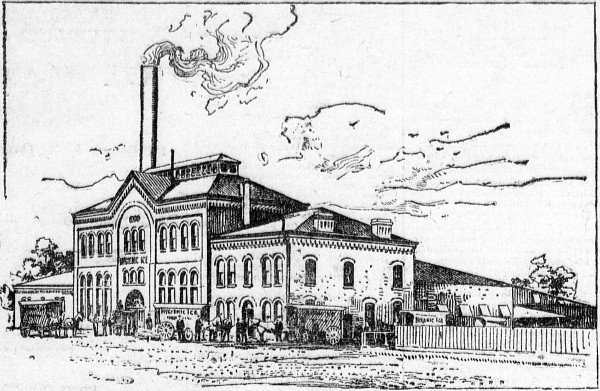 The last two weeks, we looked at the odd notch in the NE corner of the L’Enfant map of Washington. We learned about the springs that made it such important land, and the various uses for it over the years. Today, we’ll look at the final use of the place before it turned into just another neighborhood in D.C.
The last two weeks, we looked at the odd notch in the NE corner of the L’Enfant map of Washington. We learned about the springs that made it such important land, and the various uses for it over the years. Today, we’ll look at the final use of the place before it turned into just another neighborhood in D.C.
While the plans to put in a zoo never came to fruition, the Gibson’s spring remained a valuable commodity, as it continued to produce large quantities of clean water. In 1890, the Hygienic Ice Company, looking to find a good source of water, bought up the land. Their aim was to using the fresh water from the spring to make ice, ensuring a steady supply of high-quality ice for the residents of D.C.. For the next decades, the factory that was built on top of the spring continued to supply D.C., first under their name, then later as part of the American Ice Company, a conglomerate that had bought up local ice manufacturers up and down the east coast, and was known as one of the more problematical monopolies in the country.
Meanwhile, the land itself was subject to some issues. Several heirs of the Isherwoods sued the current owners, claiming that the sale back in the early 19th century had been done improperly, that they were thus still the owners. In spite of the courts continual denial of their claims, they kept at it, dragging in the current owners whenever possible. One of these owners was none other than Christian Heurich, of beer fame. Whether he had bought the contested land in order to build another brewery on it is uncertain; he did not, in any event, ever do so.
In 1908, the American Ice Company closed their plant. District officials had repeatedly arrested the local head of the company, one Samuel A. Kimberly for excessive smoke production. While claiming that there had been no complaints from any neighbors, Kimberly was tired of being arrested – and fined $20 each time – and thus made the decision to shut down operations. Another official of the company said to the Washington Post that they had been subject to “persecution rather than prosecution” and that there were other factories who emitted far more smoke than they.
Either way, that was it for ice production in this area, and eventually the land was subdivided for use as housing, receiving the name Rosedale and Isherwood. The latter name eventually was dropped, and with it the last reminder of a family that had long been important here.
Today, nothing of the spring remains. Where it used to gush out of the ground, a series of mid-rise apartment buildings stand. And the name Isherwood remains only as a short street that runs for two blocks just south of this.

